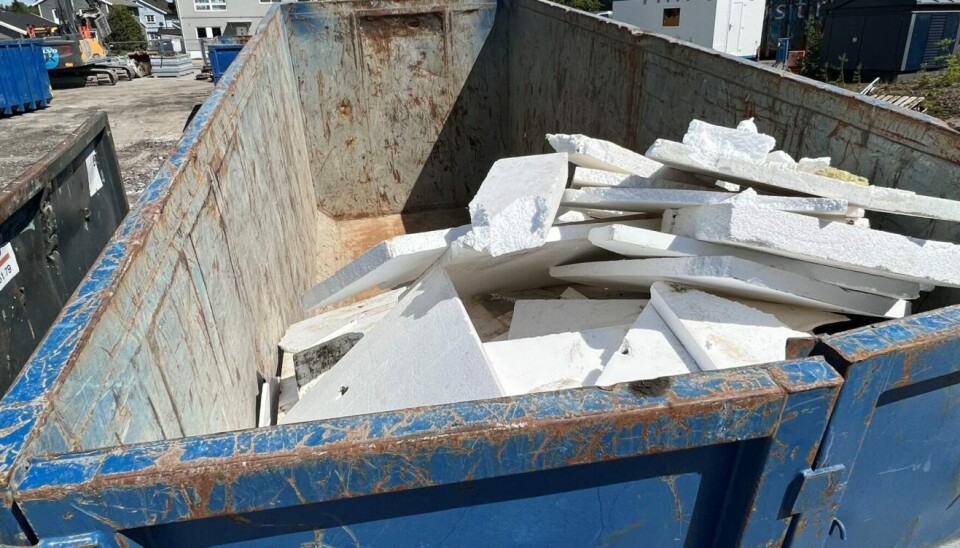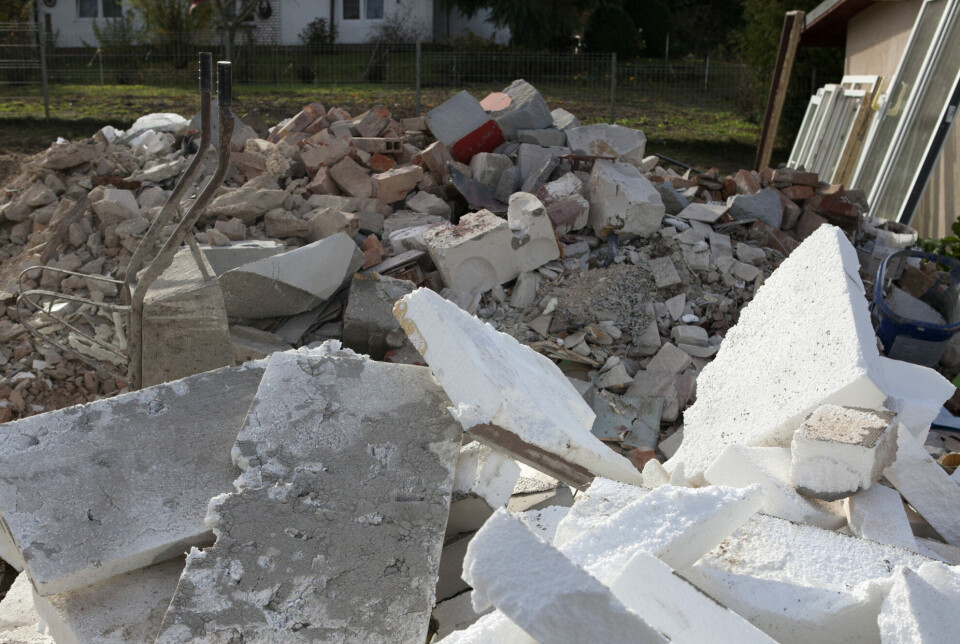THIS CONTENT IS BROUGHT TO YOU BY SINTEF - read more

The construction sector must learn to reuse plastic insulation after demolition
Tonnes of reusable polystyrene ends up as plastic waste when buildings are demolished. Researchers want to see more recycling and reuse.
With strict energy requirements for buildings, we are using more insulation than ever before. Every year, we manufacture and import tens of thousands of tonnes of plastic pellets for the production of insulation materials. At the same time, we dispose of and incinerate insulation equivalent to one-third of what we use.
“ To prevent such large amounts of plastic waste from being incinerated or ending up in landfills, we need to develop new systems for waste sorting and disposal, as well as for the reuse and recycling of building materials. This will benefit both the industry and the environment,” researcher Birgit Risholt says.
She is a senior research scientist at SINTEF and leads the project Circular EPS, which aims to recycle EPS insulation materials from the building and construction industry. EPS refers to expanded polystyrene.
A circular economy value chain will improve access to insulation materials and reduce the need for costly waste disposal after demolition.
The goal is to adapt reusing and material recycling for the future. The work is being done in collaboration with the building industry.
“It will also result in the better management of natural resources, less environmental damage, and lower greenhouse gas emissions,” Risholt says.
Polystyrene is well-suited for recycling
The global demand for polystyrene in construction is increasing, mainly due to energy efficiency efforts.
In essence, polystyrene is made of entirely recyclable materials and is thus highly suited for reuse. In many cases, the plastic insulation will outlast the building it is used in.
Non-contaminated materials should be usable for new insulation applications, ground up for use in new products, or recycled into new raw materials.

“As part of this project, we’ll be analysing used EPS and identifying methods of recycling that ensure circular and sustainable resource use," Risholt says.
The entire industry must be involved
Project owner BEWI (formerly Jackon) is one of the companies that supplies building systems and insulation solutions to the building and construction industry. Now, they aim to lead the way in using recycled materials.
BEWI's goal is to use 50 per cent recycled raw materials in EPS production, which is more ambitious than current regulatory requirements. To achieve this goal, they need access to a significant amount of EPS waste from the construction sector, both from new-build projects and demolitions.
Used expanded polystyrene (EPS) can be recovered from buildings throughout Norway. It takes up a lot of space and is thus expensive to transport. Used EPS may also be contaminated with dirt or chemicals. For these reasons, a logistics system is needed to compress used EPS before transport, as well as a system to sort out contaminated materials.
“In order for us to get hold of sufficient used EPS, the entire value chain will have to get behind the new approach. We can never have enough partners,” Tone-Cecilie Lie says. She is a senior sustainability manager at BEWI.
Assessing the potential for reuse
Ín this project, SINTEF is responsible for assessing existing building stock to determine how much EPS there is and the potential for reuse. It is also important to assess whether the materials can be reused in their current form, or if they have to be processed in some way. Not everything can be recycled.
“Before we can reuse EPS that is recovered from demolished buildings, we have to make sure that it doesn’t contain any harmful substances,” Risholt says.
For example, we know that some EPS from the 1980s contains brominated flame retardants. We cannot use such EPS in new buildings, the researcher adds.
SINTEF will be testing a variety of technical building solutions involving recycled EPS in its laboratories. Researchers will also assess costs, market scenarios, and the need to adapt regulations to facilitate easier recycling and trading of used materials.
More content from SINTEF:
-
How Svalbard is becoming a living lab for marine restoration
-
New study: Even brand-new apartments in cities can have poor indoor air quality
-
Fresh hope for patients with chronic inflammatory bowel disease
-
Testing a giant ship: May take five kilometres to stop
-
A robot is helping researchers hunt for the best cancer warriors
-
Locomotives that run on diesel can be electrified





































